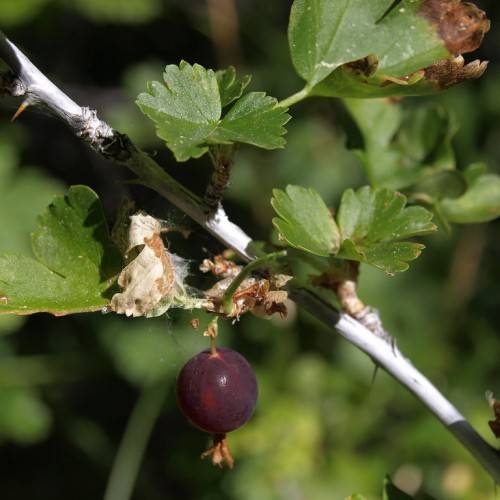
Canadian Gooseberry
Ribes oxyacanthoides
Cycle:
Perennial
Watering:
Average
Hardiness Zone:
Sun:
Full sun Partial sun Shade
Soil:
Sandy,Loamy,Clay
Fruits:
Fruits Ready In Summer
Edible:
Yes
Leaf:
Yes
Growth Rate:
Low
Drought Tolerant:
Yes
Thorny:
Yes
Care Level:
Medium
watering
The Canadian Gooseberry (Ribes oxyacanthoides) is a hardy, easy-to-grow plant that is drought tolerant once it is established. It does best in well-draining soil that is moist but not soggy. Water the gooseberry plant thoroughly during the growing season, but only when the top inch or 2 of soil feels dry. This can usually be done every 10-14 days, or about 1-2 inches of water every week. During extended dry spells, water more frequently in order to keep the soil consistently moist. In the fall and winter, reduce the frequency of watering to about once a month, or when the soil feels dry.
sunlight
Canadian Gooseberry plants need full, direct sunlight for at least 6 hours each day to thrive. They grow best in areas that receive sunlight for most of the day, but can tolerate some periods of shade. Ideally, they should be located in an area that receives morning sun and afternoon shade to prevent leaves from burning. The plants benefit from supplemental artificial lighting if necessary to ensure adequate exposure to light, although caution should be exercised to avoid keeping the plants lit for too long. To avoid over-exposure to direct sunlight, particularly during the hottest parts of the day, the plants can be provided with shade cloth or other light-filtering materials.
pruning
Canadian Gooseberry (Ribes oxyacanthoides) should be pruned twice a year - once in early spring (March/April) and again in late summer/early fall (August/September). In early spring, lightly prune the top of the plant to ensure the plant has a strong central stem and to reduce the overall height of the plant. This will also keep the plant flowering and fruiting well. In late summer/early fall, prune away any dead or dying branches, and thin out thick patches of stems or branches to maintain an open shape and allow for better air circulation and sunlight penetration. Pruning should be done very judiciously, as removing too much growth can reduce flowering and fruiting for the coming season.
